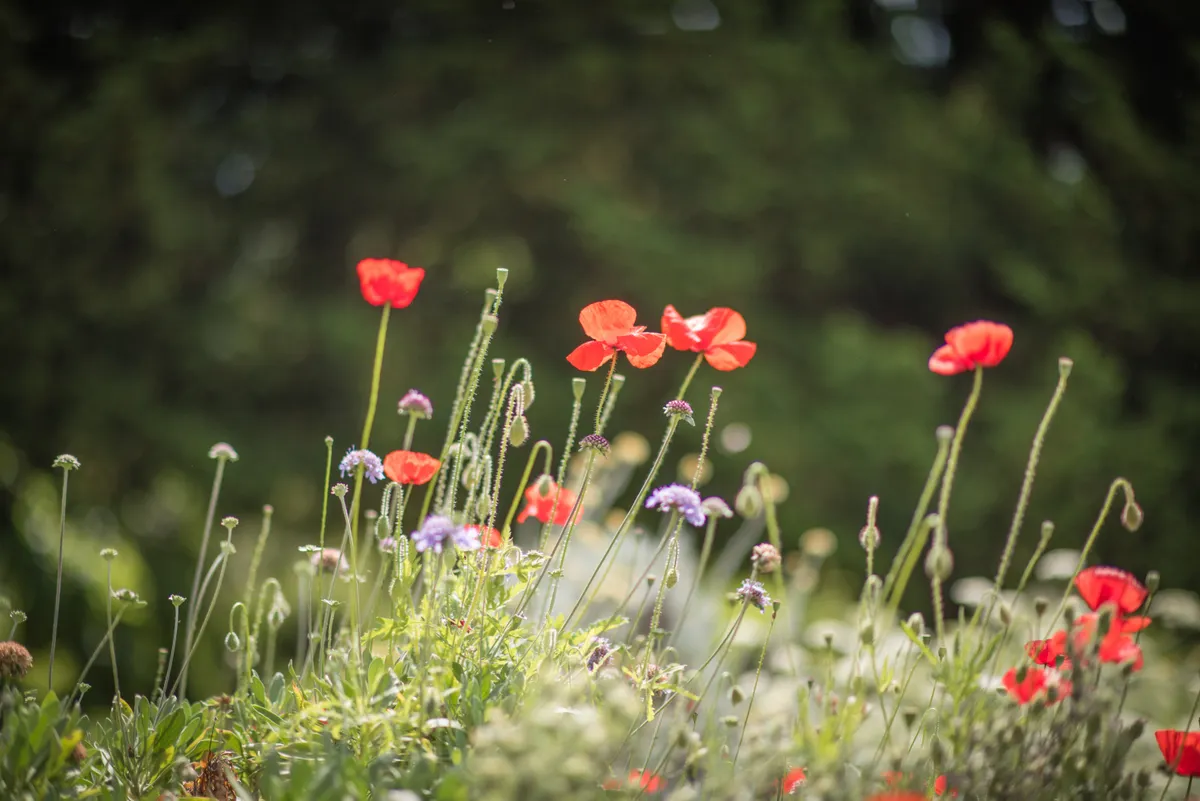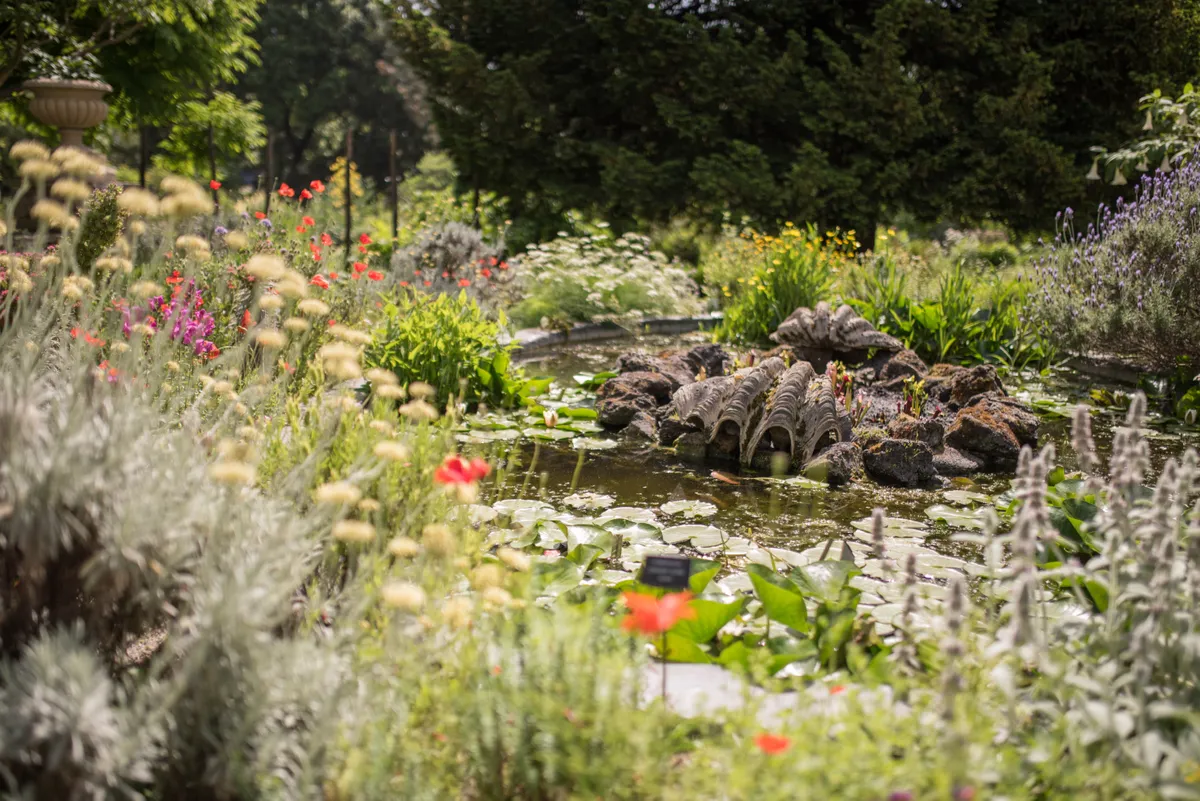Chelsea Physic Garden, near the banks of the river Thames has been a place of scientific understanding, healing and enjoyment for the people of London for over 300 years. For the last ten years, its garden team has kept detailed records of weather patterns to help plan its gardening year, and these have chronicled a changing climate. "It used to be that the rain we collected would last until late spring," says head of plant collections Nell Jones. "Last year we ran out in March." As a result of the changes they have witnessed, the garden has declared the world's first 'microclimate emergency.'
The team at the garden is working hard to understand and combat the impact of this microclimate emergency. They think that working with other gardens and gardeners is really important in order to share the strategies that work.
Director of the Chelsea Physic Garden, Susan Medway, commented on the action the garden is taking, saying “Our walls can't protect us from changes in the global climate. So, we want to do something about it. When we talk about the impact of climate change all over the world it can often be overwhelming, and we can find it easier to ignore it. By focusing on the impacts we are seeing here in our four acre garden, we can help people to grapple with big ideas on a manageable scale. Our aim is to help them understand how to make small positive changes that can make a difference."
Having witnessed the changes themselves and implemented strategies to alleviate stress on the garden, the team have come up with six things that people can do at home to tackle their own microclimate emergency.

6 tips for tackling the microclimate emergency in your garden
1. Rainwater collection
We have just installed a brand-new rainwater collection tank. This allows us to not only reduce the amount of energy we use to pump water into the garden but also means that plants get rainwater, which they prefer.
Try it at home - Anyone can collect rainwater. Even if you only have a windowsill you can pop a glass outside when it is raining and store it in recycled water bottles. Your plants will thank you.
2. Hand scrubbing paths
Keeping our pathways clean and safe for our visitors is very important. We used to do this with a jet wash, but by simply scrubbing them by hand we can save thousands of litres of water a year.
Try it at home - Reducing the water we use to clean our gardens is a good idea. A broom with good stiff bristles is ideal, just let mother nature provide the rain and get out there with some elbow grease.
3. Mulching
Of course we know that mulching is a good way to keep down weeds and put nutrients back into the soil, but it is also a very effective way to preserve water in the soil, meaning less watering.
Try it at home - Watering our greenhouse vegetables, or that tomato plant you have on the windowsill takes a lot of water because so much of it evaporates. Adding some mulch to the top of your growbags or to your plant pots will reduce this and mean less watering is needed. You can even make your own with some shredded wastepaper.

4. Recyclable pots
Every pot that we use at Chelsea Physic Garden is either recyclable or compostable. Our dedicated team of staff and volunteers diligently wash and dry every pot we use, so that it can be used again and again and again without spreading diseases.
Try it at home - Re-using plant pots not only saves the environment, it also saves you money. Be thorough in your cleaning, rinse off any excess dirt first, then soak in warm soapy water for 15 minuets before scrubbing them clean with a stiff brush. Wipe the pot dry and then dry it out thoroughly in the sunlight.
5. Recycled winter protection
There are quite a few plants at Chelsea Physic Garden that need a little extra protection over the winter. Rather than buying special wraps for these plants we recycle materials like bubble wrap to make effective, light-permeable insulation for these plants.
Try it at home - Next time you get a delivery through the post and are annoyed by all that plastic packaging why not transform it into winter protection? With a bit of gaffer tape even small pieces can be joined together into sheets big enough to protect any plant. It’s also a neat way to replace any broken greenhouse panes while you get them fixed.
6. Observation
Keeping track of the changes in our garden is an important way to combat this emergency. Through careful observation we can sometimes find opportunities. A good example of this is being able to use less energy to heat our glasshouses, and our offices. We make sure that we are not locked into old habits of turning on and off heating based on the calendar. We accept that our microclimate has changed, and this means we need to be flexible.
Try it at home - Keeping records of the weather and climate in your garden will arm you with knowledge that you can use. This doesn’t mean you have to keep the detailed daily record that Chelsea Physic Garden does, but knowing when the first and last frost fell, or the date in the summer when your water butt ran dry means you can make informed decisions. You might invest in a second water butt or stop using a heat propagator.
To read the news about the microclimate emergency at the Chelsea Physic Garden, pick up the April issue of our magazine or subscribe. If you try any of these tips at home, then please share it with us on social media by tagging @gardens_illustrated and @chelsea_physic_garden.
